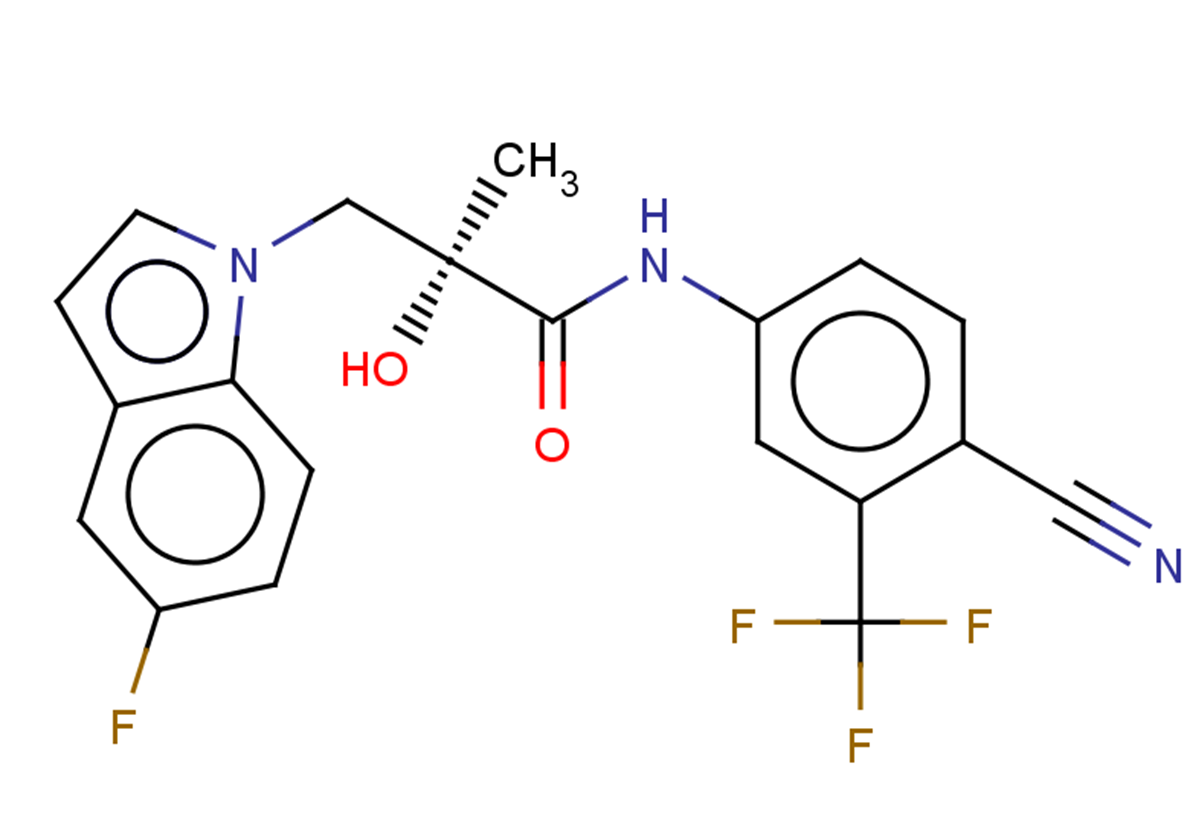
UT-155
CAS No. 2031161-35-8
UT-155( —— )
Catalog No. M23908 CAS No. 2031161-35-8
UT-155 is a selective and potent antagonist of the androgen receptor (AR) (Ki: 267 nM for UT-155 binding to AR-LBD).
Purity : >98% (HPLC)
 COA
COA
 Datasheet
Datasheet
 HNMR
HNMR
 HPLC
HPLC
 MSDS
MSDS
 Handing Instructions
Handing Instructions
| Size | Price / USD | Stock | Quantity |
| 5MG | 259 | In Stock |


|
| 10MG | 403 | In Stock |


|
| 25MG | 665 | In Stock |


|
| 50MG | 888 | In Stock |


|
| 100MG | 1242 | In Stock |


|
| 200MG | Get Quote | In Stock |


|
| 500MG | Get Quote | In Stock |


|
| 1G | Get Quote | In Stock |


|
Biological Information
-
Product NameUT-155
-
NoteResearch use only, not for human use.
-
Brief DescriptionUT-155 is a selective and potent antagonist of the androgen receptor (AR) (Ki: 267 nM for UT-155 binding to AR-LBD).
-
DescriptionUT-155 is a selective and potent antagonist of the androgen receptor (AR) (Ki: 267 nM for UT-155 binding to AR-LBD).
-
In VitroUT-155 binds to the AR-LBD at Ki of 267 nM. UT-155 potently inhibits the R1881-induced wildtype AR transactivation with 6-10-fold higher potency than enzalutamide. While UT-155 antagonizes both wildtype and mutant ARs comparably, enzalutamide is weaker by two fold with the W742L mutant AR relative to the wild type AR. Treatment of LNCaP cells with UT-155 inhibits 0.1 nM R1881-induced PSA and FKBP5 gene expression between 10 and 100 nM with 5-10-fold better potency than enzalutamide.
-
In VivoConsistent with the anti-proliferative effects in vitro, UT-155 significantly inhibits the growth of 22RV1 xenograft by 53%, while, as expected, enzalutamide has no effect on the growth of the 22RV1 tumors. Tumor weights and PSA and the expression of AR and AR-SV are significantly lower in UT-155-treated animals.
-
Synonyms——
-
PathwayEndocrinology/Hormones
-
TargetAndrogen Receptor (AR)
-
Recptorandrogen receptor
-
Research Area——
-
Indication——
Chemical Information
-
CAS Number2031161-35-8
-
Formula Weight405.35
-
Molecular FormulaC20H15F4N3O2
-
Purity>98% (HPLC)
-
SolubilityDMSO:130 mg/mL (320.71 mM);H2O:< 0.1 mg/mL (insoluble)
-
SMILESC[C@](Cn(cc1)c(cc2)c1cc2F)(C(Nc(cc1)cc(C(F)(F)F)c1C#N)=O)O
-
Chemical Name——
Shipping & Storage Information
-
Storage(-20℃)
-
ShippingWith Ice Pack
-
Stability≥ 2 years
Reference
1.Ponnusamy S, et al. Novel Selective Agents for the Degradation of Androgen Receptor Variants to Treat Castration-Resistant Prostate Cancer. Cancer Res. 2017 Nov 15;77(22):6282-6298.
molnova catalog



related products
-
Testosterone propion...
Testosterone Propionate is an efficient androgenic hormone for the treatment of low testosterone.
-
Bifluranol
Bifluranol (BX341) has anti-androgenic activity and has shown significant anti-prostatic activity in in vivo studies for the treatment of benign prostatic hyperplasia (BPH).
-
Leelamine hydrochlor...
Leelamine hydrochloride (Dehydroabietylamine) is a novel inhibitor of androgen receptor (AR).



 Cart
Cart
 sales@molnova.com
sales@molnova.com


